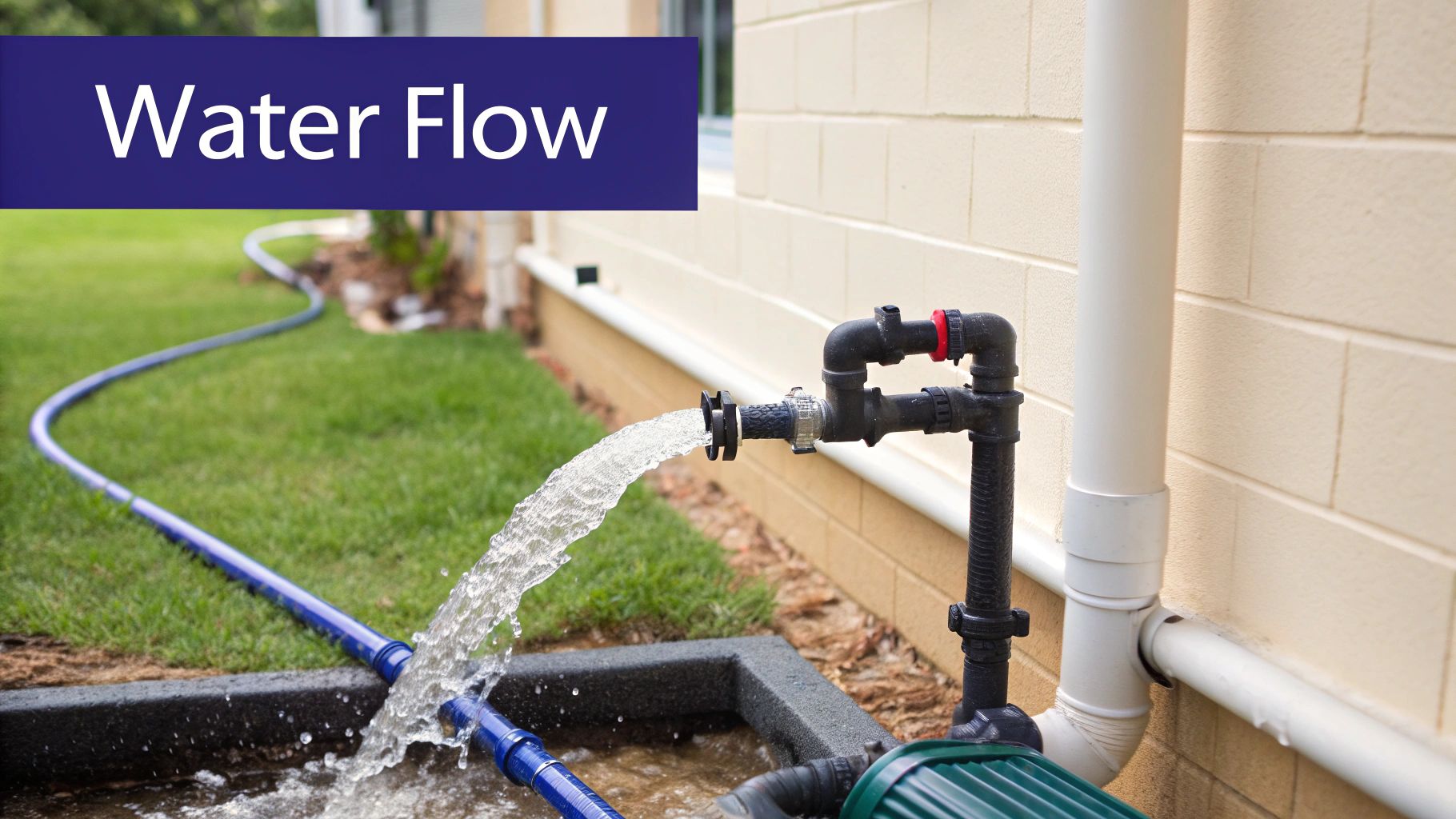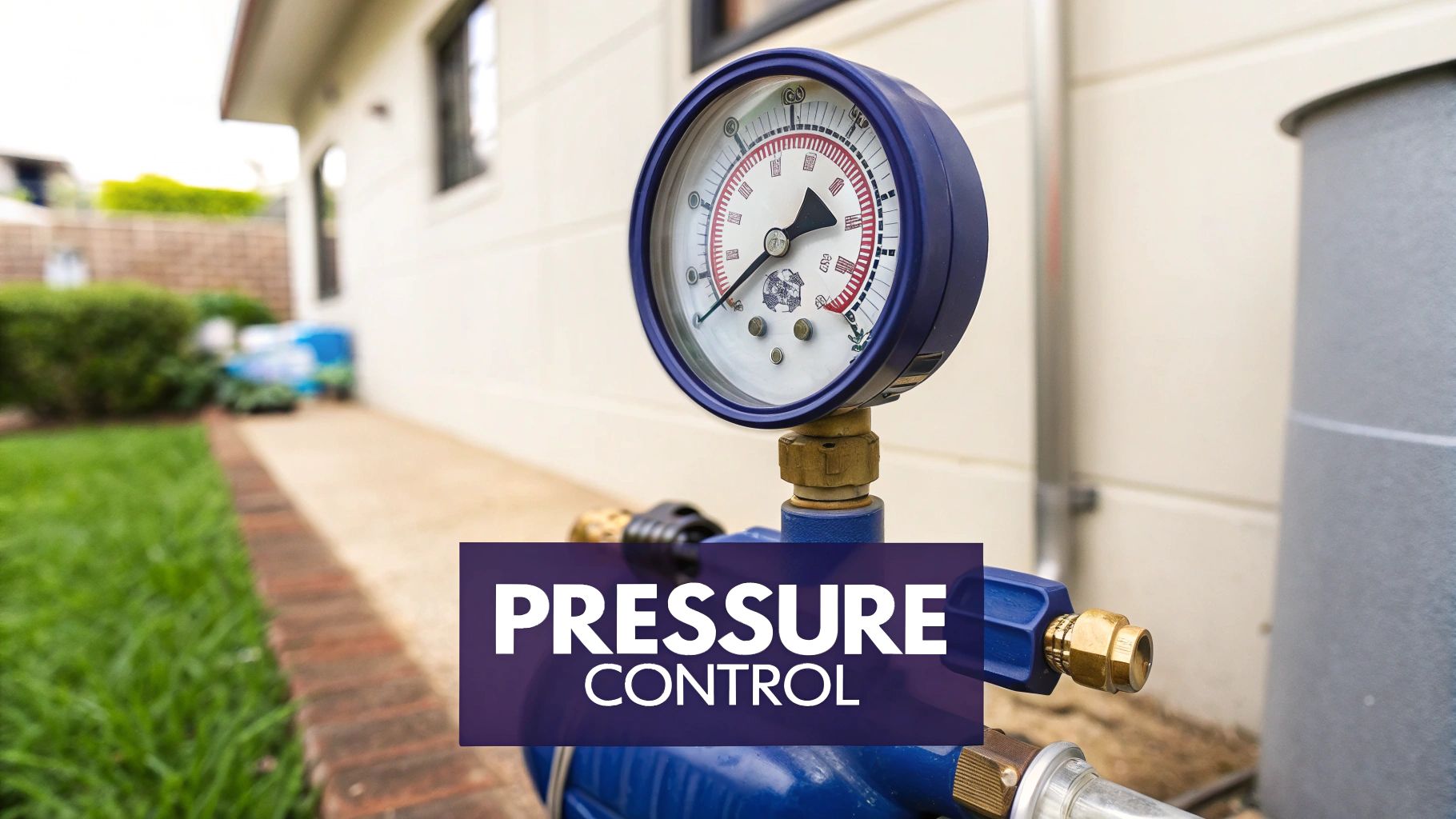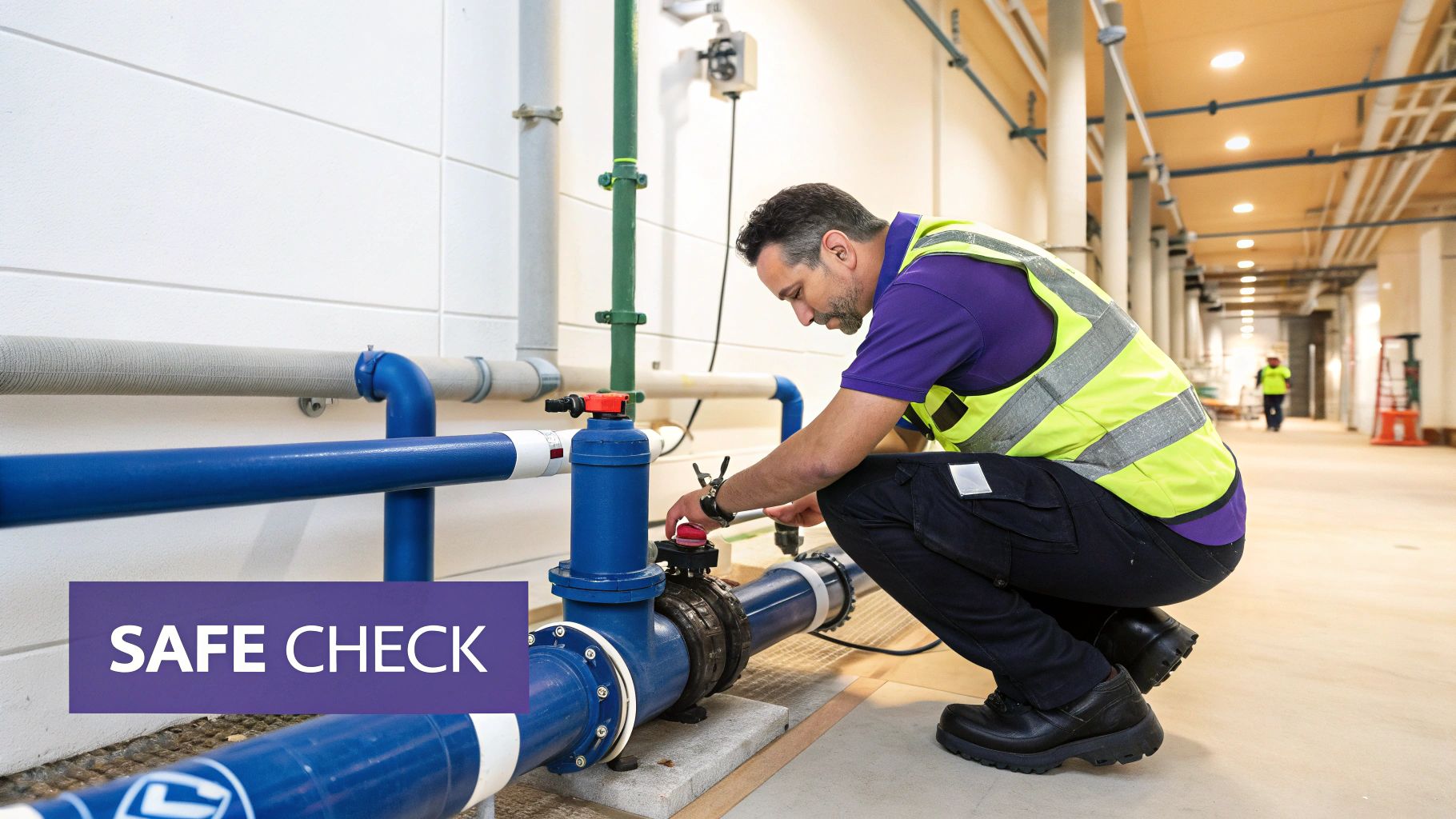The Importance of Managing Water Pressure in UK Systems

Keeping water pressure in check is key to securing the smooth operation of the UK's water systems. Without proper control, pressure can cause a series of severe problems, potentially undermining the whole setup.
Take pressure surges, for instance. These are often due to fast shifts in water flow, which can heavily strain pipes and fittings. This stress may lead to leaks and bursts, disrupting services, posing safety threats, and leading to hefty repair bills.
Then there's water hammer, a sudden spike in pressure often triggered by the swift closing of a valve or pump. This can send a shockwave through the system, damaging pipes and valves, and demanding costly repairs. Moreover, high pressure over time can cause asset fatigue, weakening infrastructure and reducing the lifespan of essential equipment.
By managing water pressure effectively, these risks can be mitigated, ensuring the durability and reliability of UK water systems. Good pressure control helps maintain a steady flow, avoiding the harmful effects of surges and water hammer, which in turn extends the life of critical components and eases the strain on the system. To delve into the history of water management reforms in the UK, check out this resource: Learn more about the history of UK water management.
How Pressure Affects UK Infrastructure
Poor water pressure control can significantly affect key infrastructure components in the UK:
-
Dams: Changes in reservoir levels can lead to major pressure fluctuations. Proper pressure management is crucial to maintaining the structural integrity of dams and safeguarding downstream equipment.
-
Reservoirs: Keeping pressures within optimal ranges prevents overflow and minimises stress on reservoir walls, ensuring a steady water supply to the distribution network.
-
Water Distribution Networks: Consistent pressure throughout the network is vital to providing reliable service, reducing leaks, and preventing pipe bursts.
The Role of Industrial Valves in Managing Pressure
Industrial valves play a crucial role in controlling water pressure within these systems. They serve as control points, adjusting flow rates and pressure levels to maintain ideal conditions. This is particularly important in gravity-fed systems, common in parts of the UK, where elevation changes can lead to significant pressure differences.
By carefully placing and managing industrial valves, water authorities can ensure consistent and safe pressure throughout the network. This controlled approach safeguards infrastructure, enhances system efficiency, and leads to long-term savings and improved public safety. The choice of valve is crucial for effective pressure management.
Engineering Effective Pressure Control Valves

Industrial valves are critical for managing water pressure in complex systems like dams, reservoirs, and distribution networks. These components are designed to respond to changing flow conditions, ensuring optimal pressure despite upstream fluctuations. This precise control is vital for avoiding damage from pressure surges and water hammer.
In a gravity-fed system, differences in elevation can lead to significantly higher pressure at lower points. Pressure control valves, strategically placed within the network, help regulate this pressure, preventing damage to household plumbing.
How Pressure Control Valves Operate
Pressure control valves work by adjusting the flow restriction within a pipe. By partially or fully blocking water flow, they can increase or decrease downstream pressure. Different valve designs are suited to unique pressure regulation scenarios.
-
Gate Valves: These use a sliding gate to control flow and are often used for on/off applications. Examples include Blackhall Engineering's Series 3400 metal seated wedge gate valve and Series 3411 parallel faced gate valve, both designed for a long asset life.
-
Butterfly Valves: Featuring a rotating disc to regulate flow, these are typically used for throttling and are ideal for large-diameter pipes where space is a concern.
-
Globe Valves: These use a plug moving within a seat to control flow, offering precise throttling and frequently used in applications requiring fine pressure control.
You might find this interesting: How to master pressure with Blackhall valves.
Selecting the Ideal Valve for Your Needs
Choosing the right valve depends on factors such as the required pressure range, system flow characteristics, and desired control level. Anti-jamming features are crucial for preventing valve seizures, a common issue in high-pressure environments. Blackhall's valves include this important design element.
Low torque operation is also beneficial, reducing the effort needed to operate the valve. This increased efficiency simplifies integration with automated control systems, including SCADA (Supervisory Control and Data Acquisition) systems, which allow real-time monitoring and remote control of valves.
To aid in the selection process, the following table compares various industrial valve types commonly used in UK water systems, focusing on their key characteristics, applications, and pressure control capabilities. This information can assist engineers in selecting the most suitable valve for their specific needs.
Comparison of Industrial Valve Types for Pressure Regulation
|
Valve Type |
Pressure Control Range |
Flow Characteristics |
Best Applications |
Maintenance Requirements |
|---|---|---|---|---|
|
Gate Valve |
Wide range, less precise |
Minimal pressure drop when open |
Isolation, on/off control |
Relatively low |
|
Butterfly Valve |
Moderate range, good for throttling |
Moderate pressure drop |
Large diameter pipes, throttling control |
Moderate |
|
Globe Valve |
Narrow range, precise control |
High pressure drop |
Fine pressure control, frequent adjustments |
Higher due to complex mechanism |
As the table illustrates, each valve type has its own strengths and weaknesses. While gate valves are excellent for isolation and on/off control, globe valves provide the most precise pressure regulation. Butterfly valves offer a good balance between range and throttling capabilities, making them suitable for various applications.
Maintaining System Integrity With Pressure Control Valves
Pressure control valves are vital for maintaining the integrity of the UK's water systems. By preventing excess pressure and reducing the damaging effects of pressure shifts, they protect valuable assets and ensure a reliable water supply.
This careful management offers several benefits: extended asset lifespans, reduced maintenance needs, and improved safety margins. These advantages contribute to the long-term sustainability of the UK's water systems, safeguarding this essential resource.
Blackhall's Approach to Managing Pressure

Blackhall Engineering addresses water pressure management with expertly crafted valve solutions. These solutions cater to the specific demands of UK water infrastructure, focusing on reliability and longevity. This emphasis is particularly important given the substantial investments needed to maintain the UK's water systems. Regulations, like the EU Drinking Water Quality Directive 1998, enforced by Ofwat under the Water Industry Act 1991, significantly influence these investment requirements. Learn more about UK water regulations.
Key Blackhall Valve Solutions
Two standout offerings from Blackhall that deserve attention are the Series 3400 metal seated wedge gate valve and the Series 3411 parallel faced gate valve. Both incorporate specific design features to meet pressure management challenges in demanding settings. Understanding the various types of bathroom faucet valves is essential for effective pressure control.
-
Series 3400 Metal Seated Wedge Gate Valve: Built for dependable performance in critical situations, this valve’s sturdy construction and metal seated design ensure impressive durability, engineered for a long asset life.
-
Series 3411 Parallel Faced Gate Valve: Ideal for high-pressure scenarios, this valve delivers precise flow control and shut-off capabilities. Its parallel faced design helps minimise leaks and ensures efficient operation, even under intense pressure.
Engineering Advantages for Pressure Management
The Series 3400 and Series 3411 both benefit from engineering advancements that boost pressure management and overall system performance. These features are crucial for ensuring dependable, low-maintenance operation.
-
Anti-Jamming Design: This prevents the valve from seizing, a common issue in high-pressure systems, reducing maintenance and extending the valve’s life.
-
Low Torque Operation: Requiring less force to operate, these valves simplify manual operation and reduce energy consumption in automated systems.
-
Long Asset Life: Designed for exceptional durability, Blackhall valves offer a long asset life, minimising replacement costs and contributing to the long-term sustainability of water infrastructure.
Real-World Applications
Blackhall valves are perfect for a wide range of pressure management applications across the UK water sector. Their robust build and advanced features enable reliable performance in various challenging settings.
-
Gravity-Fed Systems: These require consistent downstream pressure despite upstream variations. Blackhall valves excel here, offering accurate pressure control and preventing harmful fluctuations.
-
Emergency Drawdown: In emergencies, a controlled, rapid release of water is critical. Blackhall valves enable quick and reliable actuation for safe and efficient water management during critical incidents.
These valves integrate seamlessly with monitoring and SCADA systems. This integration provides real-time pressure and flow data, enabling proactive adjustments and optimised system performance. This data-driven approach promotes better water management, predictive maintenance, and quicker responses to pressure anomalies.
Managing Water Pressure in Critical Infrastructure

Let’s explore how pressure management operates within real-world UK water systems. These examples highlight the impact of well-chosen and properly installed valves on system performance. For further reading, explore our article about Dam and Reservoir Control Valves.
Gravity-Fed Distribution Networks
Many UK water systems use gravity-fed distribution networks. These systems rely on the natural slope of the land to move water, but this method can lead to inconsistent pressure downstream. Variations in the water source level can complicate matters further. Higher reservoir levels increase pressure, while lower levels decrease pressure at the consumer’s tap.
Blackhall’s pressure reducing valves offer a solution by maintaining consistent downstream pressure regardless of upstream fluctuations. The Series 3400, with its metal seated wedge gate design, provides precise flow control and reliable long-term performance, especially important in remote areas with limited maintenance access.
Emergency Drawdown in Dams
Dam safety is crucial, and emergency drawdown systems are vital for risk management. These systems need to release water rapidly and safely. Blackhall’s valves, such as the Series 3411 parallel faced gate valve, are crafted for reliable performance under pressure.
Their low torque operation ensures quick actuation for efficient water release during emergencies. This rapid response is crucial for minimising damage and protecting lives. Integrating these valves with monitoring systems allows for real-time control and accurate data logging for improved future incident management.
Managing Pressure Zones in Interconnected Networks
The UK's water network is a complex web of interconnected zones, each operating at a different pressure. Managing these pressure differentials is essential to avoid disruptions. Imbalances can lead to backflow or supply shortages.
Blackhall's valves provide precise control over these pressure differences, maintaining the required gradients and optimising water distribution across the network. The anti-jamming feature enhances reliability, reducing the risk of malfunctions.
Blackhall Valves and SCADA Integration
Integrating Blackhall valves with SCADA systems enhances pressure management further. This integration allows for remote operation, real-time monitoring, and automated pressure adjustments, improving efficiency and response times.
Operators can remotely adjust valve settings to compensate for changes in demand or supply. This proactive approach ensures consistent network pressure and prevents disruptions. The result is better resource management and increased system reliability across vital UK water infrastructure.
The following table provides a summary of various pressure management applications in UK water infrastructure, highlighting typical pressure ranges, recommended valve types, control requirements, and critical success factors.
Pressure Management Applications in UK Water Infrastructure
|
Application Type |
Typical Pressure Range |
Recommended Valve Type |
Control Requirements |
Critical Success Factors |
|---|---|---|---|---|
|
Gravity-Fed Distribution |
Variable, dependent on elevation and source level |
Series 3400 Pressure Reducing Valve |
Consistent downstream pressure maintenance |
Reliability, remote operability |
|
Emergency Drawdown in Dams |
High pressure, rapid release required |
Series 3411 Parallel Faced Gate Valve |
Swift actuation, controlled release |
Low torque operation, integration with monitoring systems |
|
Interconnected Network Zones |
Variable, dependent on zone requirements |
Pressure Reducing & Control Valves |
Precise pressure differential control |
Anti-jamming features, reliable performance |
|
SCADA Integration |
Network-wide pressure monitoring and control |
Various, compatible with SCADA |
Remote operation, automated adjustments |
Real-time data acquisition, responsive control |
This table illustrates the various demands placed on pressure management equipment in different water infrastructure applications. Choosing the right valve and control system is crucial for ensuring reliable and efficient water management. Blackhall's range of valves and integration capabilities offer solutions to meet these diverse needs.
Smart Pressure Management: SCADA Integration Essentials
Connecting advanced pressure control valves with SCADA (Supervisory Control and Data Acquisition) systems is transforming water management in the UK. This integration creates intelligent water networks, offering substantial benefits for both water operators and consumers.
This technology allows for real-time pressure monitoring. This constant data flow provides valuable insights into system performance, enabling early detection of potential problems. Automated adjustments are also possible, allowing for dynamic responses to changing conditions. For example, during peak demand, SCADA systems can automatically adjust valve settings to maintain optimal pressure across the network.
Furthermore, remote operation capabilities boost efficiency and improve response times. Operators can control valves from a central hub, eliminating the need for manual adjustments at each valve site. This is particularly useful in remote or hard-to-reach locations. You might be interested in: Read also: Cryogenic Valve Solutions from Blackhall.
Sensor Technologies and Communication Protocols
Several sensor technologies and communication protocols facilitate this level of control and integration. Pressure transducers, strategically placed within the network, provide accurate pressure readings to the SCADA system. These readings are transmitted using various communication protocols, including Modbus, Profibus, and Ethernet/IP.
Choosing the right protocol depends on the specific needs of the system. Factors like data transmission speed, distance, and security concerns all influence the decision. Correct selection and implementation of these technologies are vital for the reliable operation of a SCADA-integrated pressure management system.
Blackhall Valve Solutions and SCADA Integration
Blackhall's valve solutions are engineered for simple integration with SCADA systems. Their valves utilise compatible communication protocols, ensuring seamless data exchange and control. The Series 3400 and Series 3411 valves, known for their low-torque operation, are especially well-suited for automated control. Maintaining proper water pressure offers environmental benefits; see our article on how to reduce water pollution.
This combination allows for precise control and optimised performance. For example, in a gravity-fed system, the SCADA system can automatically adjust the valve setting based on real-time reservoir levels. This ensures consistent downstream pressure and avoids issues stemming from fluctuating source levels.
Benefits of Data-Driven Pressure Management
Data-driven pressure management significantly improves water management in numerous ways. The abundance of data from SCADA systems enables predictive maintenance, identifying potential issues before they escalate. This minimises downtime and prolongs the lifespan of valuable assets.
Optimised energy use is another key advantage. By precisely controlling pressure, SCADA systems reduce unnecessary energy consumption by pumps and other equipment. This results in lower operating costs and lessens the environmental impact of water distribution.
Finally, the ability to respond quickly to potential pressure anomalies enhances system safety and reliability. SCADA systems provide instant alerts for unusual pressure readings, allowing operators to take corrective action before major problems develop. This real-time response capability helps prevent damaging incidents and guarantees a safe and reliable water supply for consumers.
Expert Guide to Selecting the Right Pressure Control Valves
Selecting the right pressure control valves is crucial for maintaining efficient and reliable UK water systems. A thorough evaluation of several key factors ensures the chosen valve aligns perfectly with the application's specific demands. A systematic selection process leads to optimal performance and long-term value.
Analysing Flow and Pressure Requirements
The first step involves a detailed analysis of the system's flow and pressure requirements. This includes determining the target pressure range, anticipated flow rate, and potential pressure fluctuations. This information is fundamental for selecting a valve capable of managing these specific conditions. Understanding your system's flow dynamics helps ensure the valve operates within its optimal parameters.
Assessing Environmental and Operational Conditions
Environmental and operational conditions play a significant role in valve selection. Factors like temperature, water quality, and the presence of corrosive substances must be considered. For example, coastal applications may require specialised materials resistant to saltwater corrosion. A thorough assessment prevents costly mismatches and ensures the valve's resilience in its operating environment. This proactive approach protects the system and extends the valve's lifespan.
Choosing the Right Valve Materials
Material selection is paramount for valve longevity and water compatibility. Different materials offer varying resistance to corrosion, wear, and temperature extremes. Stainless steel, for instance, is often preferred for its durability and corrosion resistance in various water applications. The right material ensures the valve withstands the UK water environment and maintains optimal performance throughout its service life, resulting in lower maintenance costs and enhanced reliability.
Specifying Actuation and Control Systems
Actuation and control systems require careful selection to ensure seamless operation. The actuation mechanism, whether manual, electric, or pneumatic, should suit the application. Remote-controlled electric actuators, for instance, are beneficial in inaccessible locations. Control systems can range from simple on/off controls to sophisticated automated systems integrated with SCADA networks. Careful consideration of these elements ensures efficient and responsive pressure control.
Planning for Seamless Integration
Integration planning is essential to minimise disruption during valve installation or upgrades. This involves assessing the existing infrastructure, pipe sizes, and connection types to ensure compatibility with the new valve. Thorough planning streamlines the installation process, reduces downtime, and minimises compatibility issues, saving time and money.
Focusing on Lifecycle Costs
When selecting pressure control valves, consider lifecycle costs rather than just the initial purchase price. A premium valve might have a higher upfront cost, but its extended lifespan, reduced maintenance, and enhanced reliability often result in significant long-term savings. This cost analysis emphasises the value of investing in high-quality, durable valves.
Collaborating with Technical Experts
Collaborating with manufacturers' technical experts, like Blackhall's valvologists®, is crucial for optimal specification outcomes. Their expertise in valve design, application, and integration offers valuable insights during the selection process. This collaborative approach ensures the chosen valve meets project needs, maximising performance and value.
Explore Blackhall's comprehensive range of water valves: Discover Blackhall's Water Valve Range For expert advice on selecting the right pressure control valve, consult with Blackhall's valvologists®: Consult with Our Experts